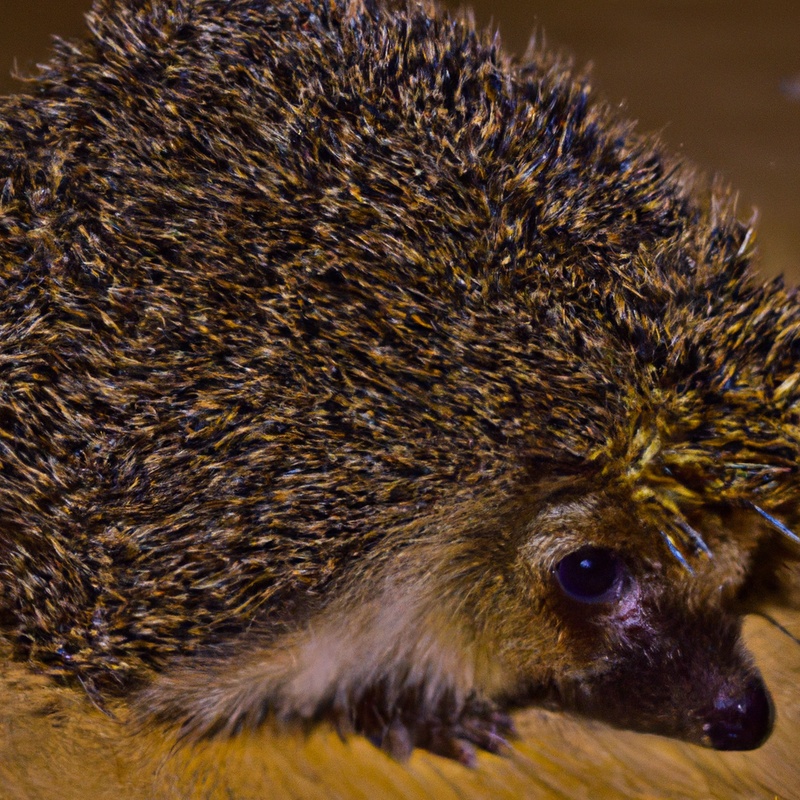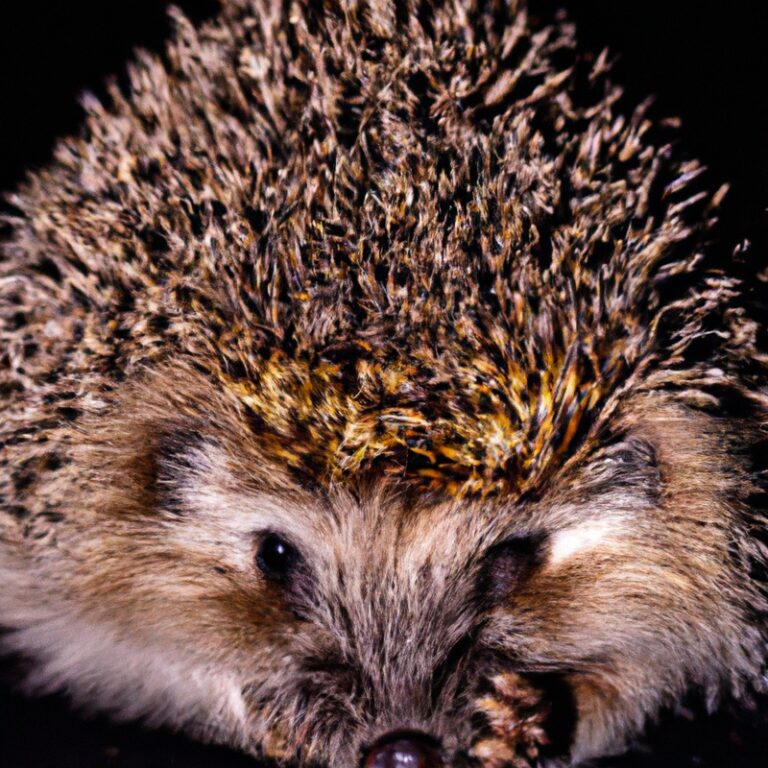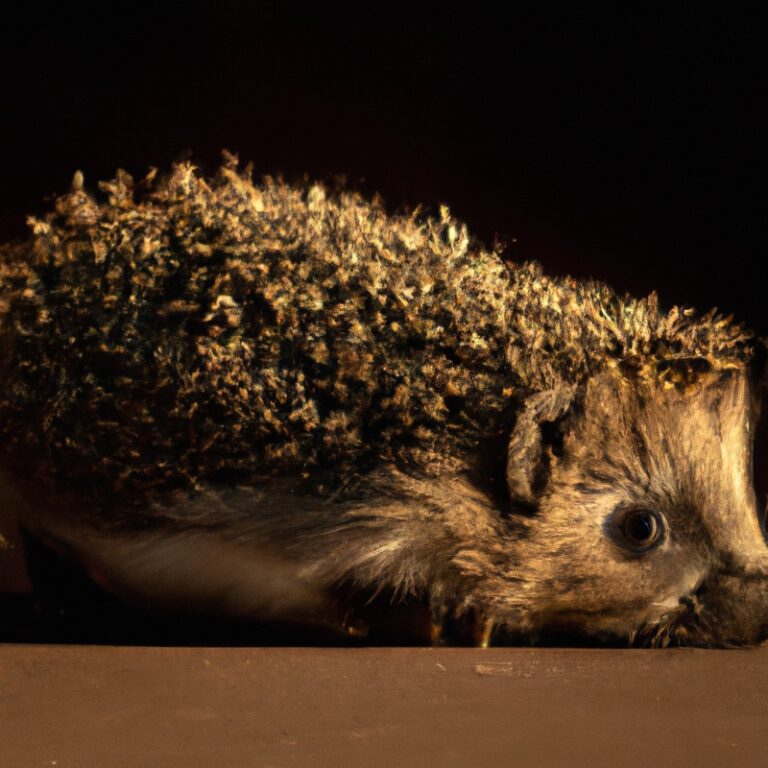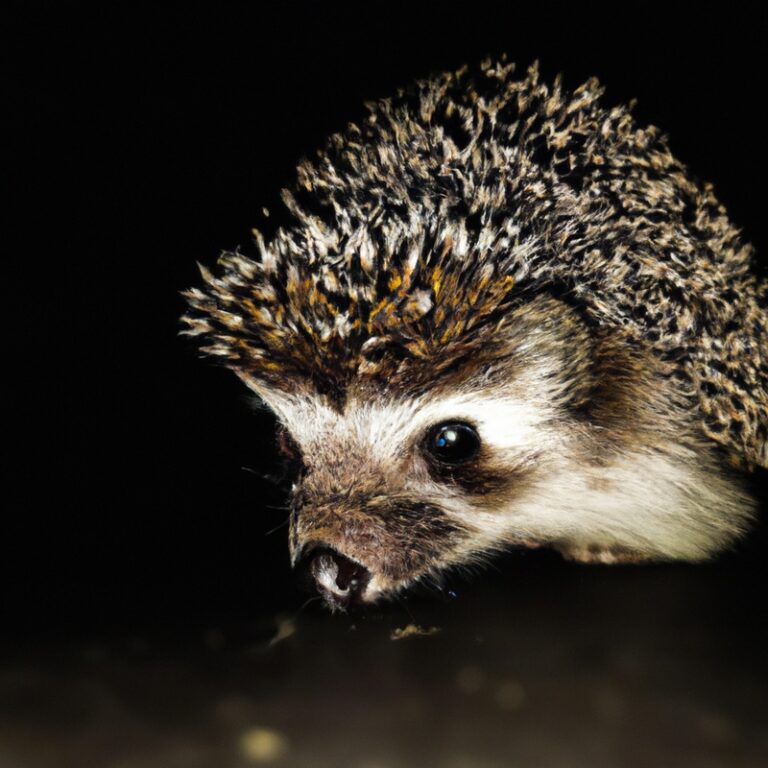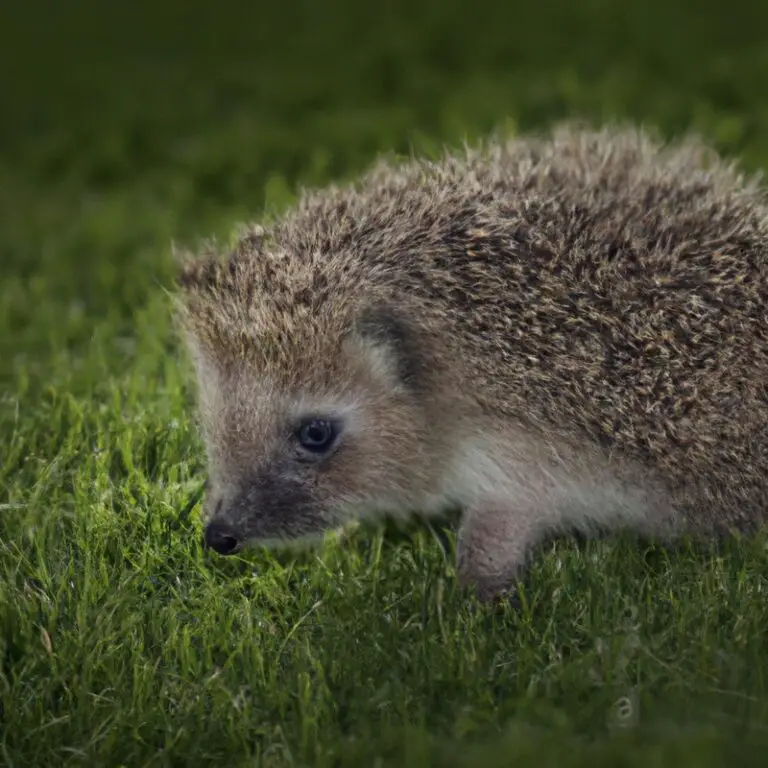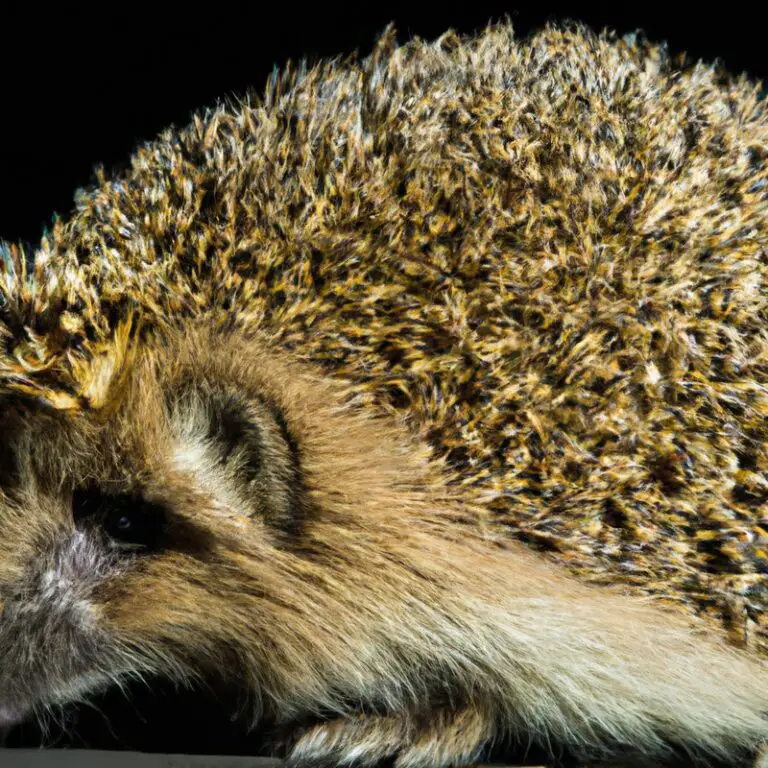How To Create a Hedgehog-Friendly Garden Layout?
Key Takeaways:
- Provide dense vegetation and hiding places for hedgehogs.
- Avoid the use of pesticides and toxic chemicals in your garden.
- Create wildlife corridors and safe passages for hedgehogs.
- Provide a water source and suitable places for hedgehogs to hibernate.
Do you want to turn your garden into a haven for adorable and beneficial hedgehogs?
Well, you’re in the right place! Creating a hedgehog-friendly garden layout not only helps protect these fascinating creatures but also brings a touch of wild nature to your backyard.
In this article, we’ll explore the importance of hedgehog conservation, the benefits of having them in your garden, and how to design a layout that caters to their needs.
Get ready to learn how to provide shelter, food, and water sources, as well as create hedgehog-friendly boundaries and select suitable plants.
Let’s dive in and make your garden the ultimate hedgehog hangout!
| Hedgehog-Friendly Garden Layout | Description |
|---|---|
| 1. Dense Vegetation | Plant a variety of shrubs, hedges, and flowering plants to provide cover and hiding spots for hedgehogs. |
| 2. Wildflower Meadow | Create a wildflower meadow area to attract insects, which is a natural food source for hedgehogs. |
| 3. Water Feature | Include a shallow and escape-friendly water feature such as a pond or birdbath for hedgehogs to drink from. |
| 4. Hedgehog Houses | Install hedgehog houses or create hedgehog-friendly habitats using log piles or leaf piles. |
| 5. Avoid Pesticides | Avoid using pesticides and chemicals in your garden as they can harm hedgehogs and their food sources. |
Why Create a Hedgehog-Friendly Garden?
Creating a hedgehog-friendly garden is important to support hedgehog conservation and their dwindling populations. Having hedgehogs in your garden comes with several benefits, making it worthwhile to create a space where they can thrive.
The Importance of Hedgehog Conservation
Hedgehog conservation is incredibly important for several reasons. Firstly, hedgehogs are considered key indicators of a healthy ecosystem.
By protecting hedgehogs and their habitats, we can ensure the overall balance and biodiversity of our environment.
Secondly, hedgehogs play a vital role in controlling pests such as slugs and insects, making them valuable allies for gardeners and farmers alike. Finally, hedgehogs have cultural significance and are loved by many.
By conserving hedgehogs, we can preserve an iconic and beloved species for future generations to enjoy.
Benefits of Having Hedgehogs in Your Garden
Having hedgehogs in your garden can offer a range of benefits.
- Pest control: Hedgehogs naturally feed on slugs, snails, and insects, helping to keep your garden free from pests.
- Natural fertilizer: Hedgehogs leave behind droppings that act as a natural fertilizer, enriching the soil and promoting healthy plant growth.
- Biodiversity: Supporting hedgehogs in your garden contributes to the overall biodiversity of the area, attracting other beneficial wildlife.
- Educational opportunity: Observing hedgehogs in their natural habitat can be a valuable educational experience for both children and adults.
- Conservation efforts: By providing a safe and welcoming environment for hedgehogs, you are contributing to the conservation of these declining and protected species.
Assessing Your Garden for Hedgehog-Friendliness
To ensure your garden is hedgehog-friendly, start by assessing its suitability for these adorable creatures.
Understanding Hedgehog Habitats and Needs
Hedgehogs are fascinating animals that require specific habitat and environmental conditions to thrive. Understanding their needs is essential if you want to create a hedgehog-friendly garden.
Here are some key points to consider:
- Shelter: Hedgehogs need safe and cozy places to rest and hibernate. Provide areas with dense vegetation, log piles, or specially designed hedgehog houses.
- Food and Water: Hedgehogs are insectivores, so they rely mainly on insects for their diet. Encourage biodiversity in your garden by planting native plants and leaving areas of long grass. Ensure a fresh water source is available.
- Access: Hedgehogs are excellent climbers, but they also need access to different parts of your garden. Create small gaps at the bottom of fences or walls to allow hedgehogs to pass through.
- Safety: Ensure your garden is hazard-free. Check for and remove any netting or litter that hedgehogs could become entangled in, and avoid using chemicals or pesticides that can harm them.
By considering these factors and making small adjustments, you can provide a welcoming habitat for hedgehogs in your garden.
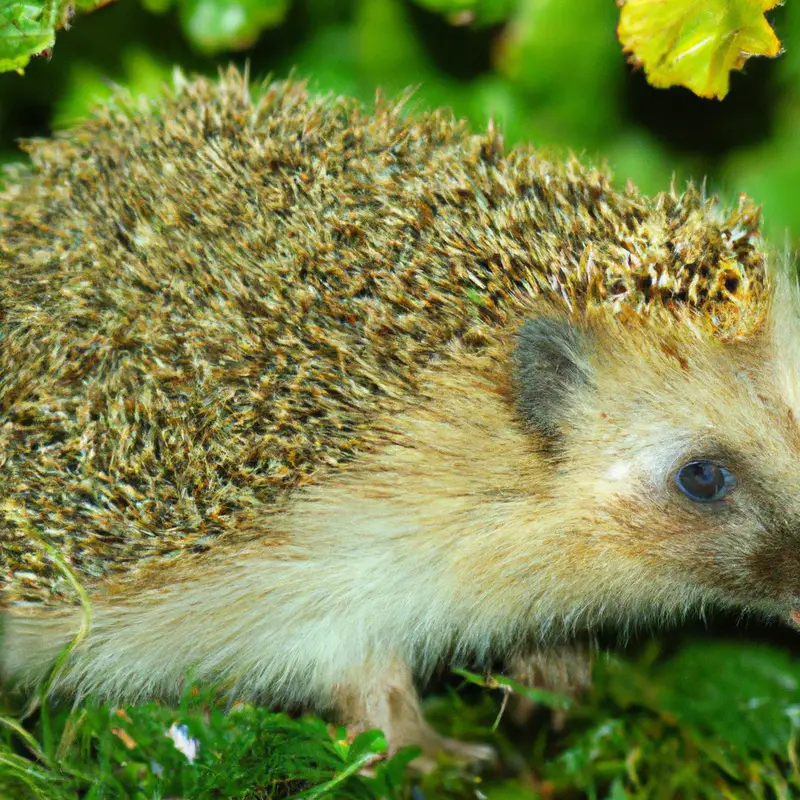
Examining Possible Hazards
When examining possible hazards in your garden, there are a few things you need to be aware of.
Firstly, check for any chemicals such as pesticides or herbicides that could harm hedgehogs and other wildlife.
Secondly, make sure there are no small gaps or holes where hedgehogs could get stuck or trapped.
Additionally, keep an eye out for sharp objects or items that could cause injury.
Lastly, check for any ponds or pools without an escape route for hedgehogs.
By being mindful of these hazards, you can create a safer environment for hedgehogs in your garden.

Designing a Hedgehog-Friendly Garden Layout
When designing a hedgehog-friendly garden layout, there are a few key factors to consider.
Creating Sheltered Areas
When creating sheltered areas in your hedgehog-friendly garden layout, it’s important to consider their needs for protection and safety. Here are a few key tips for creating a cozy space for these cute little creatures:
- Provide dense vegetation: Plant hedges, shrubs, and bushes to create natural cover and hiding spots for hedgehogs.
- Incorporate log piles: Stack logs and branches to create a “hedgehog hotel” where they can nest and seek shelter.
- Create a hedgehog house: Install a purpose-built hedgehog house or create a DIY alternative using a wooden box with an entrance hole.
- Build a rock pile: Arrange rocks and stones to create a rocky area where hedgehogs can hide and take cover.
- Avoid using chemicals: Minimize the use of pesticides and chemicals in your garden to ensure a safe and healthy environment for hedgehogs.
Remember, creating sheltered areas is vital for hedgehog conservation, and by providing them with a safe haven, you can contribute to their well-being and population growth.
Providing Food and Water Sources
To provide food and water sources for hedgehogs in your garden, make sure to leave out a shallow bowl of fresh water for them to drink.
You can also create a feeding station by placing a small dish of cat or dog food, along with some mealworms, in a secluded area.
Avoid using slug pellets, as they can harm hedgehogs.
Additionally, let areas of your garden become wild and leave piles of leaves or logs for hedgehogs to forage and hibernate in.
Providing these resources will help create a welcoming environment for hedgehogs.
Ensuring Hedgehog-Friendly Boundaries
To ensure hedgehog-friendly boundaries in your garden, it’s important to take a few simple steps.
Firstly, avoid using wire or mesh fencing, as hedgehogs can become trapped or injured.
Instead, opt for solid barriers such as wooden fences or hedges.
Secondly, create small holes or gaps at the base of your fences to allow hedgehogs to freely roam between gardens.
Additionally, avoid using chemicals or pesticides near your boundary, as they can be harmful to hedgehogs.
By making these small adjustments, you’ll be creating a safer environment for these prickly creatures in your garden.
Selecting Suitable Plants
When selecting plants for a hedgehog-friendly garden, it’s important to choose species that provide both food and shelter for these adorable creatures.
Opt for native plants and wildflowers that offer a variety of insects, berries, and seeds.
Create dense areas with shrubs and bushes, and include low-growing plants for easy access.
Avoid using pesticides and herbicides, as these can be harmful to hedgehogs and the insects they rely on.
Implementing Hedgehog-Friendly Features in Your Garden
Create a welcoming home for hedgehogs in your garden.
Building Hedgehog Houses
Building hedgehog houses is a great way to provide shelter for these adorable creatures in your garden. Here’s how to do it:
- Choose a suitable location in a quiet, undisturbed part of your garden.
- Use natural, untreated materials like wood to build a simple, sturdy structure.
- Make sure the entrance is small enough for hedgehogs to enter but large enough to prevent other animals from getting in.
- Create a snug, cozy interior by lining the house with dry leaves, straw, or shredded newspaper.
- Place the hedgehog house in a hidden spot, preferably near a hedge or under bushes.
Remember, a good hedgehog house provides a safe haven for these nocturnal creatures, especially during the colder months. Enjoy watching them explore and find comfort in their new home!
Installing Hedgehog Highways and Access Gaps
To create a hedgehog-friendly garden, it’s important to install hedgehog highways and access gaps.
These openings provide safe paths for hedgehogs to move between gardens, allowing them to find food, shelter, and potential mates.
Hedgehog highways can be created by cutting small holes in fences or walls, while access gaps can be made by removing barriers such as steps or ramps.
Remember to check that these entrances are clear and accessible for hedgehogs to use.
Providing these pathways can help connect fragmented habitats and support hedgehog populations in your area.
Constructing a Hedgehog-Friendly Pond
If you want to construct a hedgehog-friendly pond in your garden, there are a few key factors to consider. Firstly, make sure the pond has sloping sides or a gently sloping beach area, this allows hedgehogs to easily enter and exit the water.
Secondly, avoid using steep edges or deep water, as these can pose a drowning risk.
Additionally, it’s important to provide escape routes such as ramps or rocks to allow hedgehogs to climb out if they accidentally fall in. Finally, consider adding some vegetation around the pond to provide cover and food sources for hedgehogs.
Maintaining a Hedgehog-Friendly Garden
To maintain a hedgehog-friendly garden, it’s important to avoid harmful chemicals and manage garden waste responsibly. Keep an eye on hedgehog visitors and provide necessary care and monitoring.
Avoiding Harmful Chemicals
To avoid harming hedgehogs and other wildlife in your garden, it’s important to steer clear of harmful chemicals. Here’s what you can do:
- Say no to pesticides: Avoid using chemical pesticides to get rid of pests. They can be toxic to hedgehogs and other beneficial insects.
- Choose natural alternatives: Opt for natural pest control methods such as companion planting, using beneficial insects, and creating habitats for natural predators.
- Be cautious with fertilizers: Use organic or slow-release fertilizers instead of chemical ones. Chemical fertilizers can contaminate food sources and water, posing a risk to hedgehogs.
- Mind your weed killers: Avoid using herbicides containing glyphosate or other harmful chemicals. These can disrupt the ecosystem and harm hedgehogs.
- Manage waste responsibly: Dispose of hazardous household waste, such as paint, batteries, and cleaning products, properly. Improper disposal may contaminate the soil and water, affecting hedgehogs and other wildlife.
By making these simple changes and avoiding harmful chemicals, you can create a safe and welcoming environment for hedgehogs in your garden.
Managing Garden Waste Responsibly
Managing garden waste responsibly is important for both the environment and the well-being of hedgehogs. Here’s what you can do:
- Compost: Instead of throwing your garden waste in the regular trash, create a compost pile. Hedgehogs love to forage in compost heaps, finding insects and other tasty treats.
- Avoid chemicals: Use natural pest control methods, such as companion planting or manual removal, instead of relying on pesticides. Chemicals can harm hedgehogs and other wildlife.
- Leave some wild areas: Allow parts of your garden to grow wild, with long grass, fallen leaves, and natural debris. These habitats provide shelter and food sources for hedgehogs.
- Hedgehog highways: Create small gaps in fences and walls to allow hedgehogs to roam freely between gardens. This helps them find food, mates, and suitable nesting sites.
- Safe rubbish removal: When disposing of garden waste, make sure it’s done responsibly. Avoid burning it, as this can harm hedgehogs and pollute the air. Instead, take it to a green waste recycling facility.
Monitoring and Taking Care of Hedgehog Visitors
So, you’ve done a great job creating a hedgehog-friendly garden.
Now it’s time to monitor and take care of your adorable hedgehog visitors.
Here are some important tips:
- Provide a safe space: Ensure your garden has secure boundaries like fences or hedges, preventing hedgehogs from wandering off or encountering potential dangers.
- Observe from a distance: Hedgehogs are nocturnal creatures, so it’s best to monitor their activity during the evening or early morning. Remember to keep a safe distance, as they may become stressed if approached too closely.
- Water and food: Place a shallow dish of fresh water, as hedgehogs need to stay hydrated. Offer a varied diet including cat or dog food, mealworms, and unsalted nuts to supplement their natural diet.
- Shelter: Make sure there are suitable shelters for hedgehogs to hibernate or nest in, such as log piles or purpose-built hedgehog houses.
- Avoid using pesticides: Chemicals in pesticides can be harmful to hedgehogs. Opt for natural pest control methods to keep your garden hedgehog-friendly.
- Check for hazards: Regularly inspect your garden for any potential hazards like ponds without escape routes and uncovered drains or holes. Ensure hedgehogs can move around safely.
By keeping an eye on your hedgehog visitors and providing the necessary care, you can contribute to their well-being and enjoy their presence in your garden.
Frequently Asked Questions about Creating a Hedgehog-Friendly Garden
What are the signs of hedgehogs visiting my garden?
If hedgehogs have paid a visit to your garden, there are a few signs you can look out for.
Keep an eye out for their footprints, which resemble small paw prints and are often found in muddy or soft soil.
Hedgehogs also leave behind droppings that are dark brown or black in color and may contain visible insect remains.
Additionally, you may spot fur from their spiky coats caught on plants or fences.
And if you’re lucky, you might hear their distinctive snuffling or grunting sounds during the night.
How can I attract hedgehogs to my garden?
To attract hedgehogs to your garden, create a welcoming habitat for them. Provide shelter with hedgehog houses or piles of logs and leaves.
Leave out a water source like a shallow dish and ensure there are gaps in your garden fence for them to access.
Plant hedges and native plants to encourage insects, which make up their diet. Avoid using pesticides to maintain a natural environment.
Is it safe to use slug pellets in a hedgehog-friendly garden?
No, it is not safe to use slug pellets in a hedgehog-friendly garden.
Slug pellets contain chemicals that can be harmful to hedgehogs if ingested, either directly or by consuming contaminated slugs.
Instead, you can use alternative methods to control slugs, such as creating barriers, using organic slug repellents, or encouraging natural predators like frogs and birds.
This will help protect hedgehogs and maintain a safe and friendly environment for them in your garden.
Can I keep a hedgehog as a pet?
Yes, you can keep a hedgehog as a pet! Hedgehogs can make wonderful companions if you are willing to provide them with the specific care they need. They are unique and interesting creatures, known for their quills and adorable faces.
However, it’s important to note that hedgehogs require specialized housing, diet, and attention.
They need a large cage, a suitable temperature, a balanced diet of high-quality food, and regular handling to ensure they are happy and healthy. Consider researching and consulting with a veterinarian who specializes in exotic pets before bringing a hedgehog into your home.
What should I do if I find a baby hedgehog in my garden?
If you find a baby hedgehog in your garden, it’s important to handle the situation with care. First, avoid touching the hedgehog with your bare hands.
Instead, use gloves or a towel to pick it up gently.
Place the hedgehog in a box lined with a towel and provide a shallow dish of water and some cat food. Call a local wildlife rescue organization for guidance on how to proceed.
They will be able to provide the best advice and assistance for the hedgehog’s well-being.
Final Verdict
Creating a hedgehog-friendly garden layout is not only beneficial for these adorable creatures, but also for your own ecosystem.
By understanding their needs and providing suitable habitats, food sources, and boundaries, you can attract and support hedgehogs in your garden.
Building hedgehog houses, installing access gaps and highways, and constructing a hedgehog-friendly pond are practical ways to implement hedgehog-friendly features.
Additionally, it is important to avoid harmful chemicals, manage garden waste responsibly, and monitor and care for hedgehog visitors.
By taking these steps, you can truly make a difference in hedgehog conservation while enjoying the beauty of nature right in your own backyard.

